Bigger Smarter Data
Extracting, Modeling and Linking Data for Literary History
Christof Schöch
(Trier University, Germany)
Korea University
Seoul, South Korea
23 May 2024
Introduction
Thanks
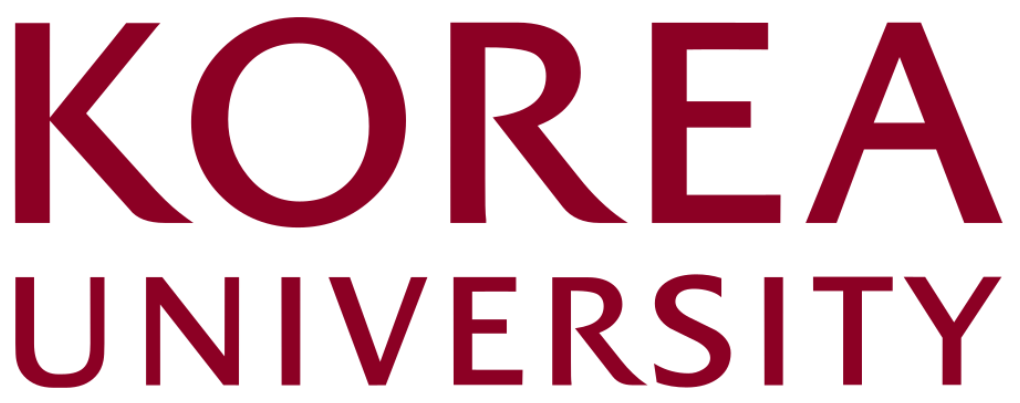

Seung-eun Lee of Korea University / Department of Korean Language and Literature / Humanities Utmost Sharing System, and Byungjun Kim, KAIST, on behalf of KADH (Korean Association for Digital Humanities).
The Ministry for Research, Education and Culture of Rhineland-Palatinate, Germany, for funding this research (Mining and Modeling Text, 2019-2023)

Thanks to all the project contributors: Maria Hinzmann, Matthias Bremm, Tinghui Duan, Anne Klee, Johanna Konstanciak, Julia Röttgermann and many others.
Overview
Bigger Smarter Data:
Linked Open Data
Three Modes of Data (and Digital Humanities)
- Qualitative DH:
- Datasets are typically small, curated, heavily annotated, flawless, specialized (‘smart data’)
- Prototype: digital scholarly editions, e.g. Goethe, Faust Edition
- Quantitative DH:
- Datasets are typically large, scraped, unannotated, with errors and biases, generic (‘big data’)
- Prototype: Large Language Models trained on lots of text, e.g. ChatGPT
Third Way: Bigger Smarter Data
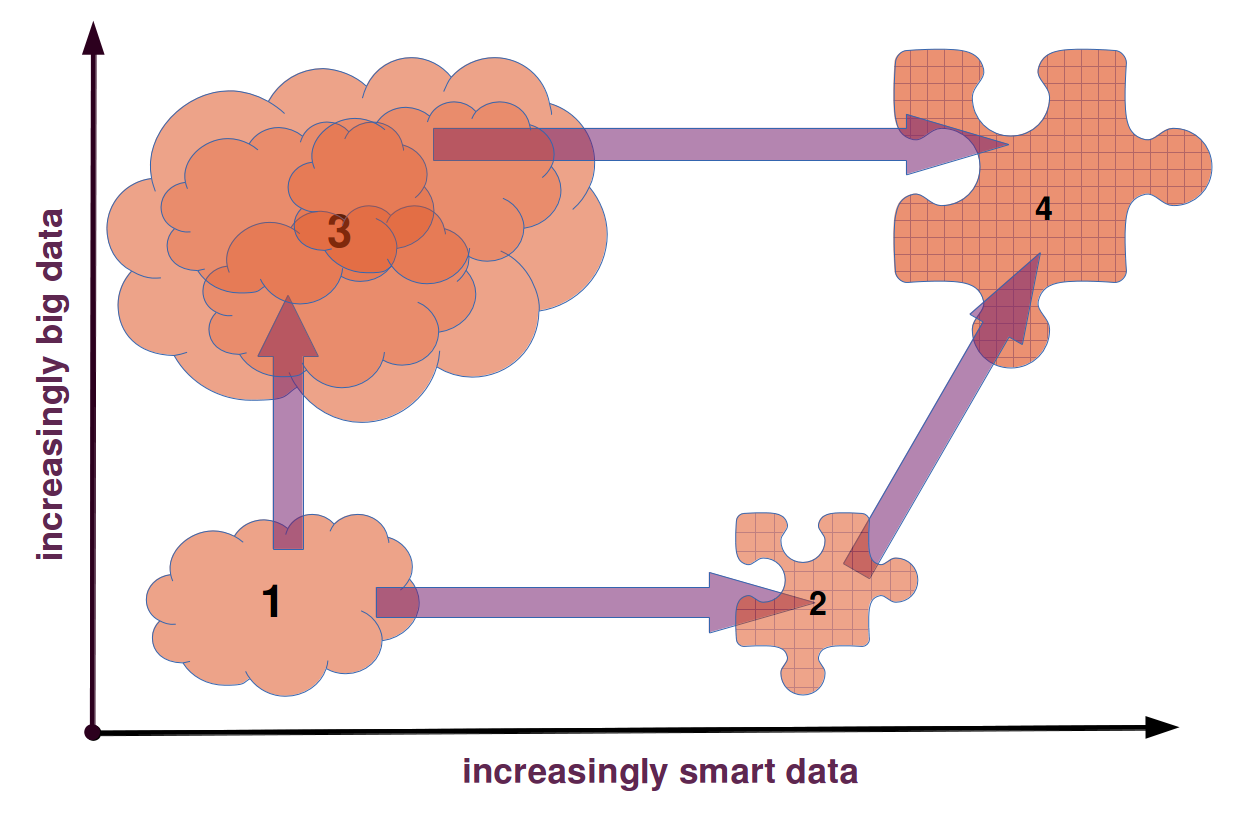
Background: What is Machine Learning?
- Fundamentally, ML involves detecting relations between features and labels
- Features that we can observe in data
- Labels, classes, or values that are relevant to our research
- We use this approach primarily for information retrieval
- We start from a text collection
- We may annotate part of the data
- Then train a new model, or use an existing model
- Evaluate the performance of the model on the annotated data
- And then derive labels, classes, values from the unannotated text
Background: What is Linked Open Data?
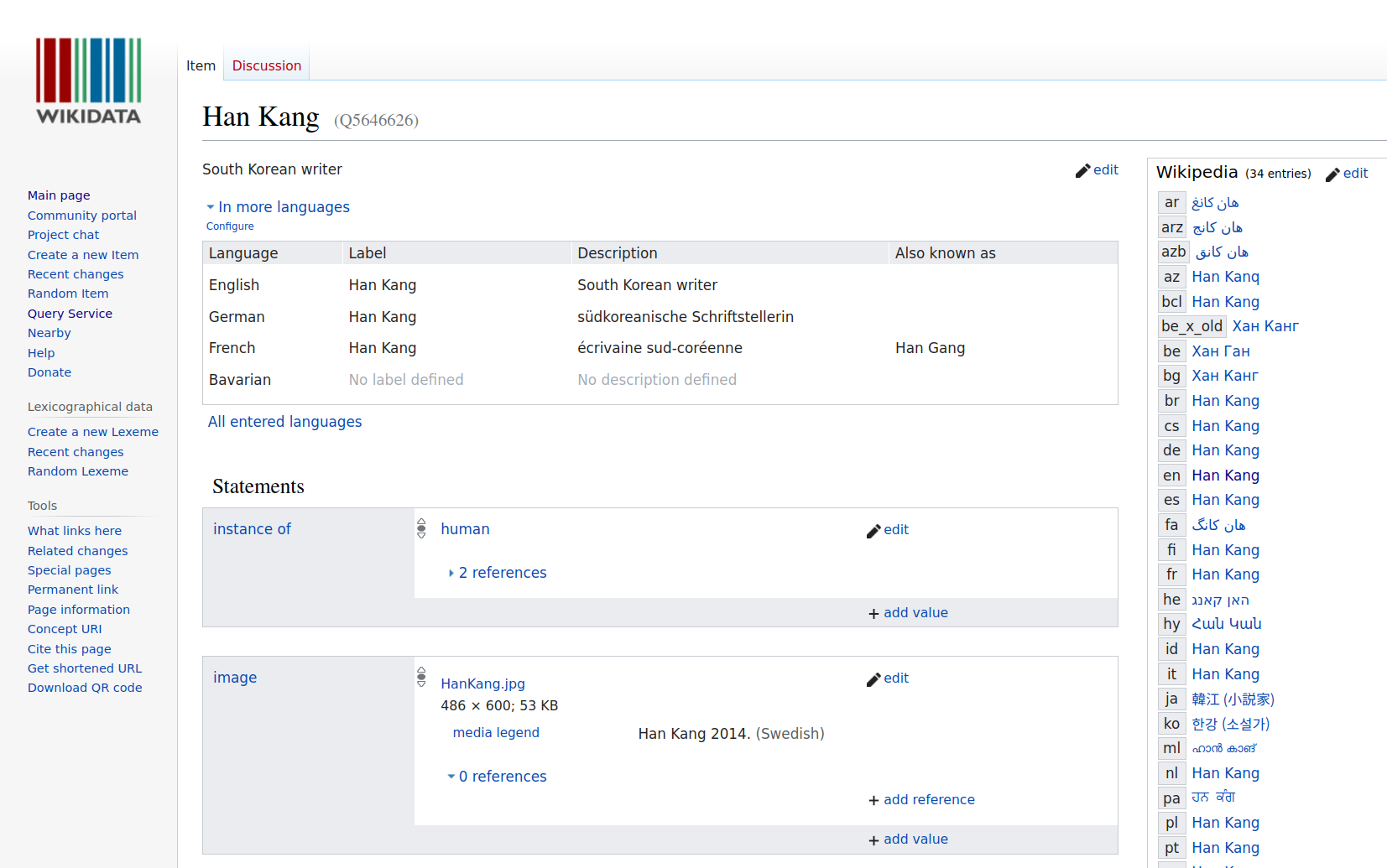
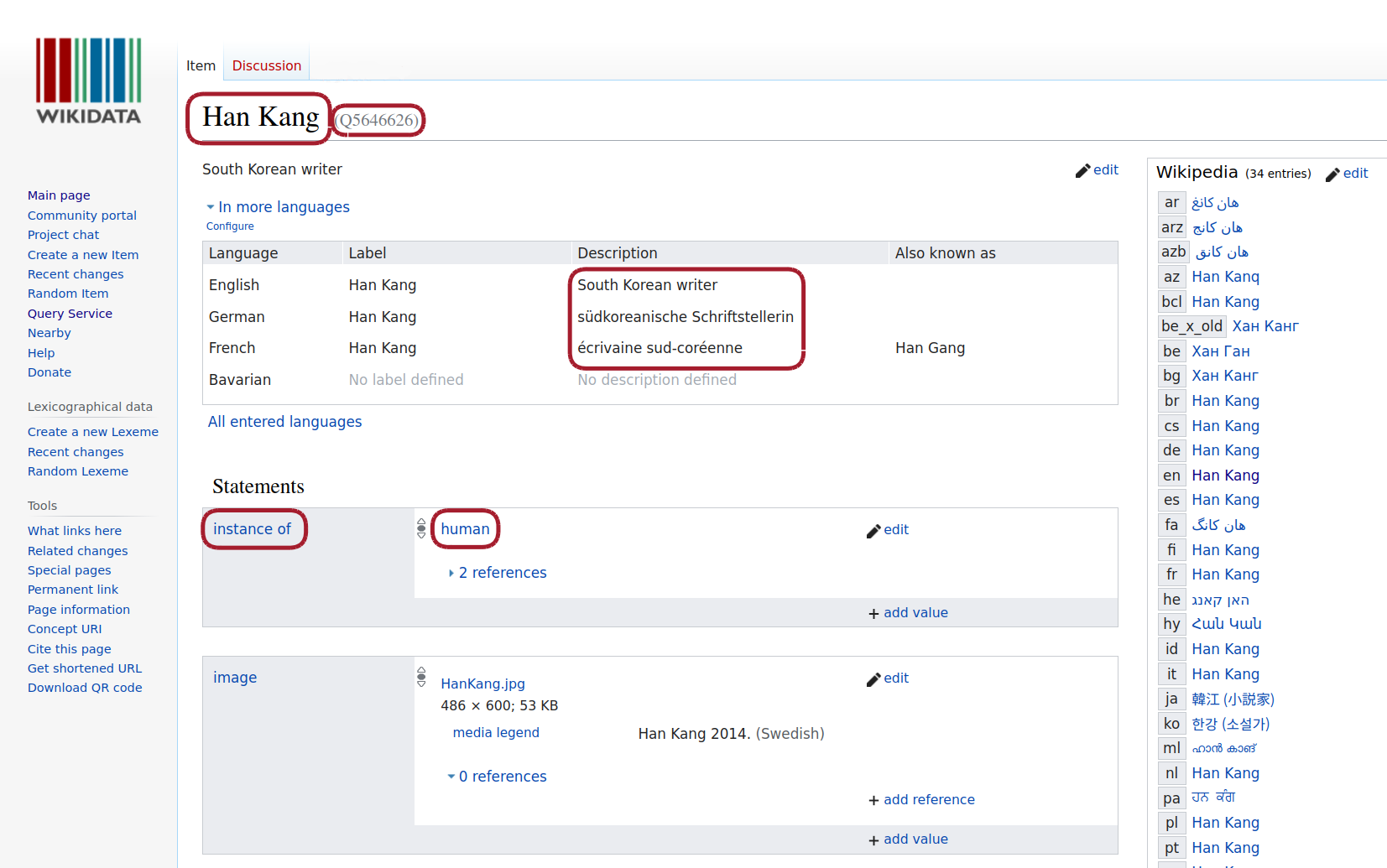

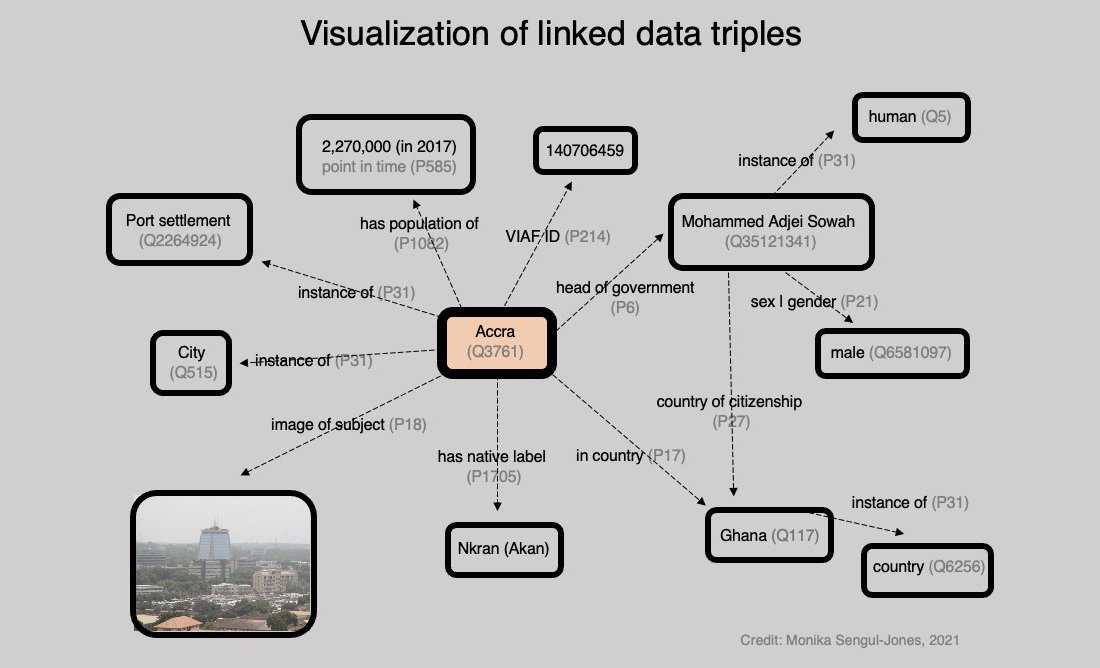
Linked Open Data: Multilingualism
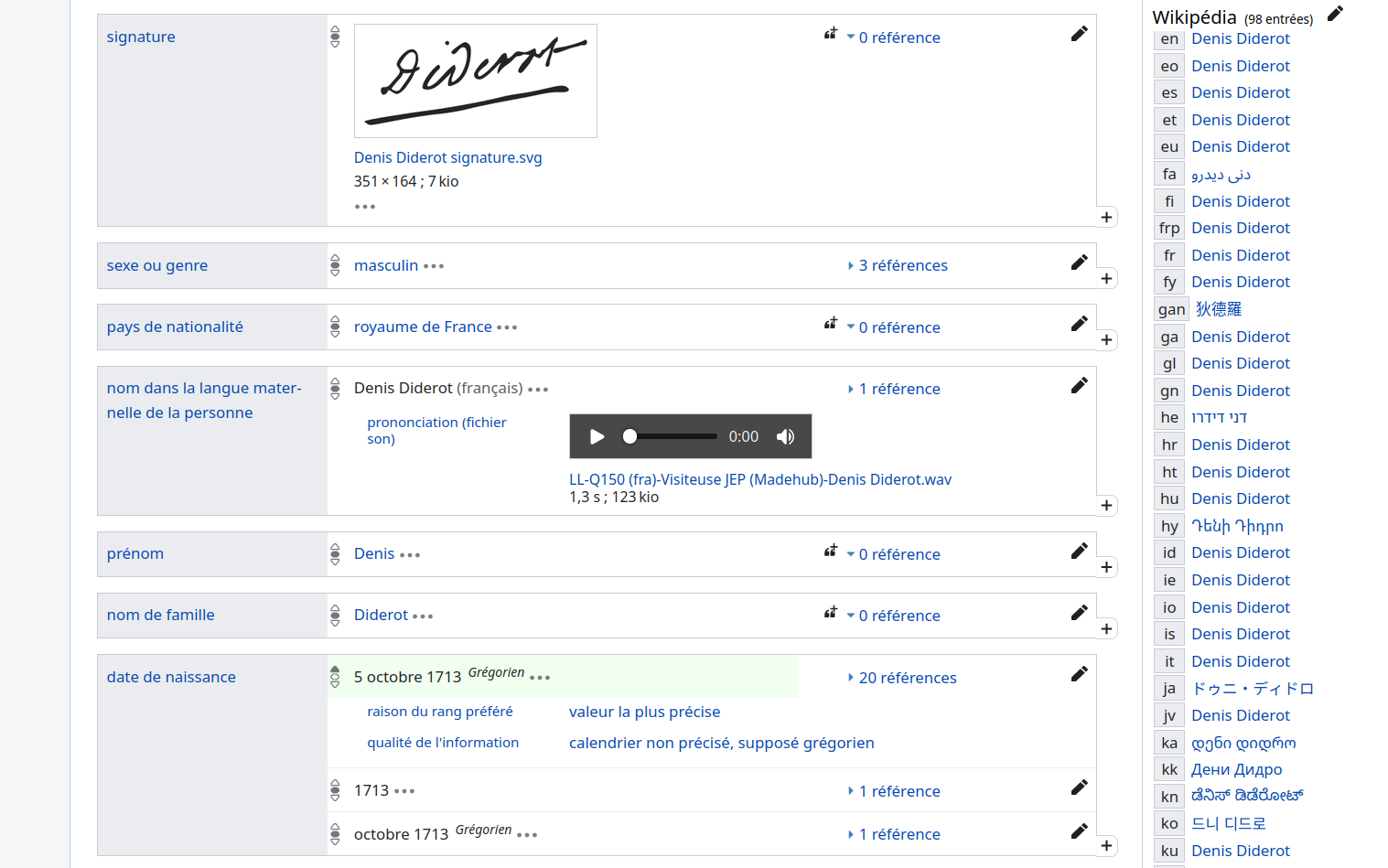

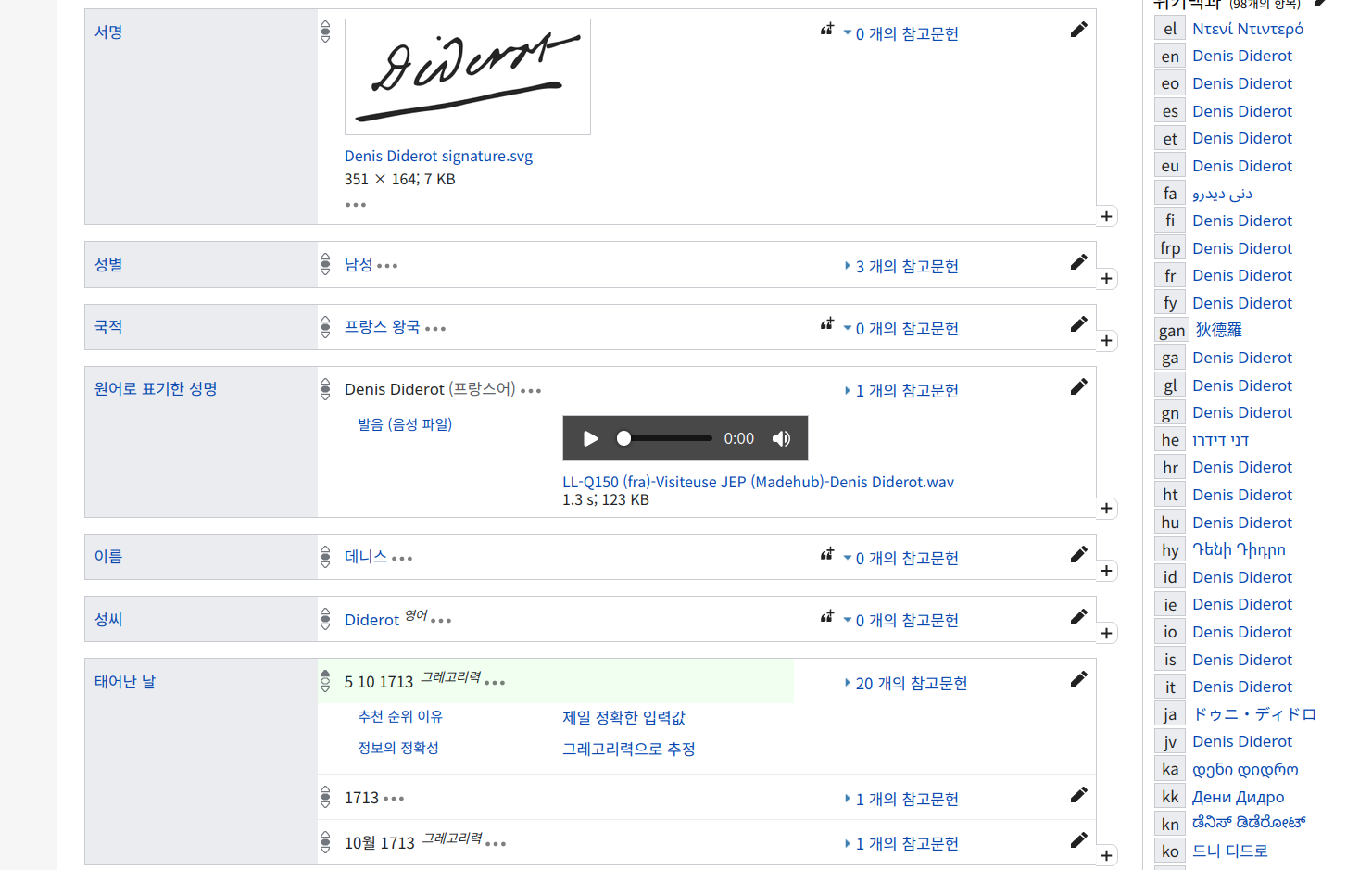
Background: What is Literary History?
- Goals of literary history
- Collecting and documenting knowledge of literary history
- Providing explanations for the development of literature
- Organizational principles
- Nations, periods, movements/currents, genres
- Authors and works: themes, forms, relationships
- Similarities and differences, continuities and change
- Functions
- Describe and document literary history
- Explain literary development
Literary History in Linked Open Data
- Building blocks
- Subjects, including persons (author, etc.) and works (primary text, scholarly literature, etc.)
- Objects, including works, but also themes, locations, protagonists, literary genre, etc.
- Predicates, as required, including: author_of, about, sameAs etc.
- Qualifications, e.g: Source (with type, date, URL)
- Some exemplary statement types
- Bibliographic:
[person] author_of [work] - Content-based:
[work] about [theme] - Formal:
[work] narrative_form [type] - and many more.
- Bibliographic:
Wikidata for Literary History
- Idea: Create a “Wikidata for the history of literature”
- Literary history information system
- LOD-based, with explorative interface and SPARQL endpoint
- Approach of an “atomization” of the historical knowledge
- Linking with other knowledge systems (taxonomies, standard data, knowledge bases)
- Key values: human and machine readable, open, collaborative, multilingual
- Compared to Wikidata
- Focused on one domain (French novel, 1750-1800)
- Better coverage / higher density of information for this domain
- Development of a systematic ontology
- much smaller: 300k vs. 1.5 billion statements
The project ‘Mining and Modeling Text’
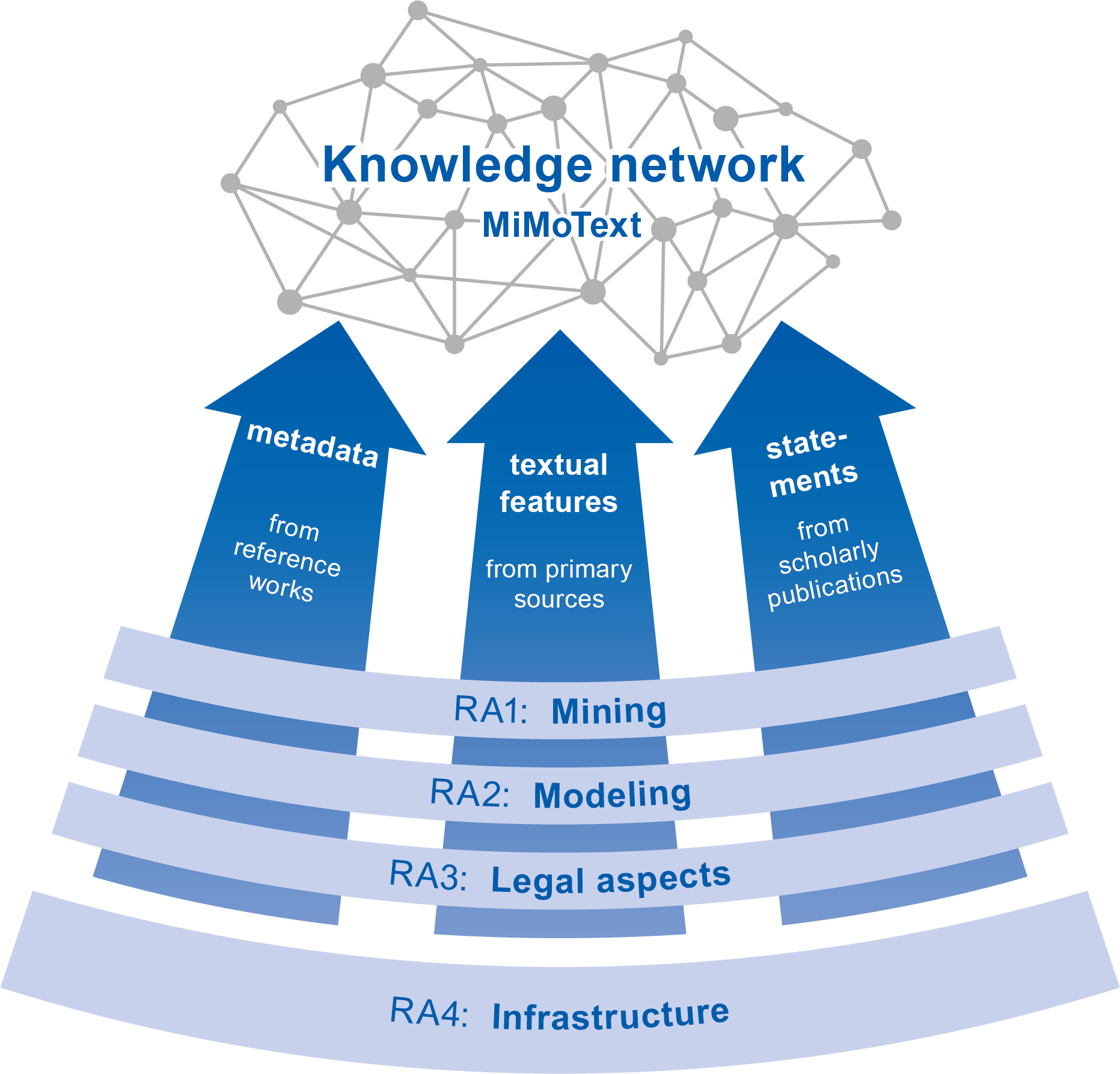
Mining: Information Extraction
Pillar 1: Bibliographie du genre romanesque français

Pillar 2: primary literature (novels)

- Corpus of 200 French novels (1750-1800)
- Encoding: in XML-TEI, with metadata, according to ELTeC schema
- Methods of analysis: Topic modeling, NER, stylometry, etc.
Pillar 3: Scholarly Literature

- Annotation guidelines => Manual annotations (using INCEpTION)
- Linking of INCEpTION with MiMoTextBase and Wikidata => disambiguation
- Creation of statements about authors and works (genres, themes, etc.)
- Machine Learning based on the annotated training data
Modeling: Data Modeling
Modular Data Model
- Module 1: Theme
- Module 2: Space
- Module 3: Narrative form
- Module 4: Literary work
- Module 5: Author
- Module 6: Mapping
- Module 7: Referencing
- Module 8: Versioning & publication
- Module 9: Terminology
- Module 10: Bibliography
- Module 11: Scholarly literature
Example: The module on themes

Example: The module on narrative location

Meta-Statements

Linking with Wikidata for ‘federated queries’
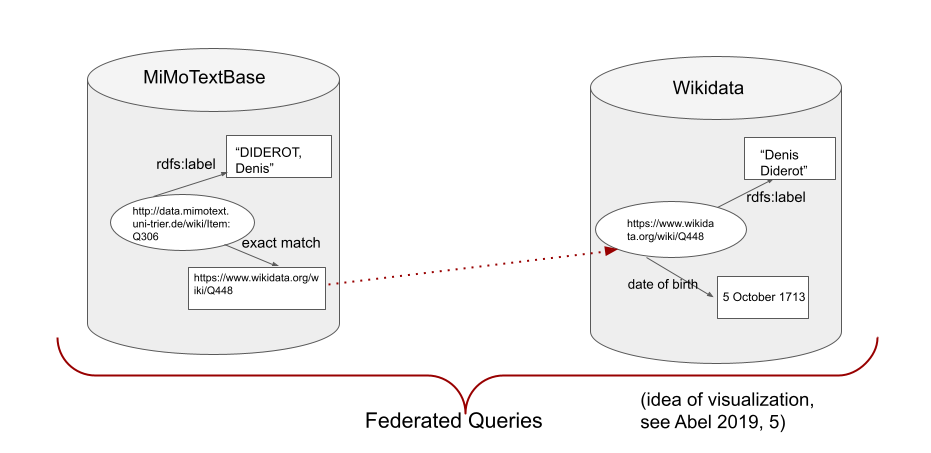
Result: Queryable Database
The MiMoTextBase

SPARQL endpoint

MiMoText Base: Query for themes in novels



Some sample queries: simple queries
Example queries: visualizations
Sample queries: networked and federated
- Link with catalogue data from French National Library (using BNF id)
- Narrative locations of novels (map)
- Authors by birth year, with portrait)
- Alternative author names from Wikidata infobox
- Network of influences between authors (using ‘influenced by’)
- Querying MiMoText from Wikidata (it works both ways)
- Novels and basic information, from Wikidata
Sample queries: comparative queries
Conclusion
Opportunities & challenges
- Opportunities
- Linking heterogeneous data from different types of sources
- Modeling, collecting and comparing contradictory statements
- Transparency in knowledge production (sources)
- Challenges
- Lack of consensus on relevant statement types in the discipline
- Complexity reduction (triple structure)
- Interoperability (tension ‘Wikiverse’ vs. OWL standard)
Lessons Learned
- Federated queries
- Central element of the LOD vision
- => Making it happen is not trivial (data model, infrastructure)
- Modeling meta statements
- Very important: perspectives / statements, not facts
- => Very different approaches in different technical contexts
- Very important: perspectives / statements, not facts
- Exchange across communities
- Literary Studies vs. Digital Humanities vs. Wikiverse
- => is essential but needs more development
- There is still so much to do!
- => We are continuing this effort in a new project called
‘Linked Open Data in the Humanities’ (LODinG)
- => We are continuing this effort in a new project called
Many thanks for your kind attention
Further resources
- Tutorial: https://docs.mimotext.uni-trier.de
- SPARQL endpoint: https://query.mimotext.uni-trier.de
- MiMoTextBase: https://data.mimotext.uni-trier.de
- MiMoText Ontology: https://github.com/MiMoText/ontology
- Reference publication: ‘Smart Modeling for Digital Literary History’
- Overview of visuals: mimotext.github.io/MiMoTextBase_Tutorial/visualizations.html
References
Martin, Angus, Vivienne G. Mylne, and Richard Frautschi. 1977. Bibliographie du genre romanesque français, 1751-1800. Mandell.
Röttgermann, Julia. 2024. “The Collection of Eighteenth-Century French Novels 1751-1800.” Journal of Open Humanities Data 10 (1): 31. https://doi.org/10.5334/johd.201.
Schöch, Christof. 2013. “Big? Smart? Clean? Messy? Data in the Digital Humanities.” Journal of Digital Humanities 2 (3): 1–19. https://journalofdigitalhumanities.org/2-3/big-smart-clean-messy-data-in-the-humanities/.
Schöch, Christof, Maria Hinzmann, Julia Röttgermann, Katharina Dietz, and Anne Klee. 2022. “Smart Modelling for Literary History.” International Journal of Humanities and Arts Computing 16 (1): 78–93. https://doi.org/10.3366/ijhac.2022.0278.

Bigger Smarter Data Extracting, Modeling and Linking Data for Literary History Christof Schöch (Trier University, Germany) Korea University Seoul, South Korea 23 May 2024